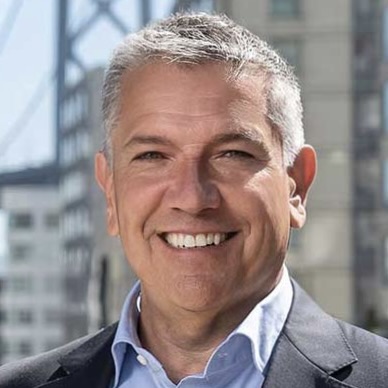Supervisor Matt Dorsey received backlash this month for asking the mayor to redirect the entire $18.9 million in city funding budgeted for a new drop-in addiction treatment center toward jails instead.
Dorsey told the San Francisco Public Press that he reversed his previous support for the centers — called wellness hubs — once the city’s plans narrowed to one site from six, and removed safe consumption sites, which would have allowed people to consume drugs under supervision so they could receive immediate help in case of overdose.
Dorsey said he now wants the funds to go toward jail health services, including forcing treatment for people in jail who are struggling with substance abuse disorder.
“I think there’s a way to make custodial and coercive interventions lifesaving interventions,” Dorsey said.
Police began jailing people who openly used drugs or appeared intoxicated in May under an initiative called the Intoxication Detention Pilot Program. The goal of the intervention, officials said, was to get people with substance abuse disorder into treatment. According to the latest numbers by the city program organizers, none of the 191 people jailed for drug use as of July 23 had entered treatment. Dorsey believes they should no longer have the option to refuse treatment.
“In the research that I’ve done on cities that have had successful interventions around open air drug scenes, there are coercive interventions that are a part of that,” he said.
Harm reduction advocates say the strategy of jailing and coercing people into treatment is dangerous. Studies have shown that the risk of overdose death among people who use drugs is dramatically increased after they’re released from incarceration.
Last week, the city medical examiner’s office released grim data showing that 71 people died of overdose in July for a total of 473 this year. That puts San Francisco on track to surpass its highest recorded number of annual overdose deaths — 725 in 2020.
Dorsey said the increased risk that an inmate fatally overdoses after being released from incarceration is a convincing reason in support of redirecting funds from wellness hubs to jail health.
“What is particularly true given the opioid use disorder — tolerance can diminish, and then if there’s a return to use, it can be more dangerous,” Dorsey told the Public Press. “So, if there are services or interventions we can have around that, it feels to me like that would be priority number one.”
Sarah Evans, global director of harm reduction at the Open Society Foundations, rejected the notion that arresting people solely for drug use would benefit their lives.
“Come on, going to jail is not the answer, right?” she said. “I’m sure that it’s possible to find people who will say ‘I went to jail, and it changed my life.’ I know people who will say that, and I respect those people for changing their lives. But by and large, we also know that that is not the experience of people. Going to jail is a setback in a person’s life. It’s not a step up.”
Evans said investments should instead be made in housing where people can get support even while continuing to struggle with substance use disorders and mental health issues.
Health experts in San Francisco have said that the city should prioritize treatment options for those who want it over those who don’t. Kelly Knight, professor at UCSF and associate director of the Benioff Homelessness and Housing Initiative, said that San Francisco should work on getting enough beds to meet existing demand.
“I don’t ever want to have the conversation about involuntary versus voluntary choices until we have the conversation about the gap in the services that are needed for people,” Knight said.
Dorsey said coercive treatment has succeeded in certain European settings, like Sweden and the Netherlands. While coercion exists in both countries, they differ significantly in their approach toward addiction. The Netherlands mandates treatment in penal settings using a harm reduction approach that focuses on the health of the drug user. In Sweden, coerced treatment is delivered through social services mandates — similar to U.S. conservatorship laws for people with serious mental health disorders. The Swedish abstinence-only approach focuses on the health of society, heavily stigmatizes drug use and asserts that all non-medical use of narcotics is abuse.
Today, the prevalence of drug use in the Netherlands is slightly above the European average, while the number of drug-related deaths remains low. The Dutch population with substance use disorder is declining, as fewer young people are becoming addicted, according to a report published by the Brookings Institute.
Sweden launched coerced treatment in 1982. By the 1990s, the cost of both voluntary and coercive treatment in Sweden became overly burdensome, according to a United Nations report from the Office of Drugs and Crime. So, priority was given to people who were willing to undergo treatment. By 2005, only 6% of substance abusers in residential treatment were in coercive care. Today, Sweden has low rates for drug use while the number of drug-related deaths is more than three times the European average, according to the Brookings Institute report.
This article is part of a series on San Francisco’s overdose crisis and prevention efforts, underwritten by a California Health Equity Fellowship grant from the Annenberg Center for Health Journalism at the University of Southern California.










